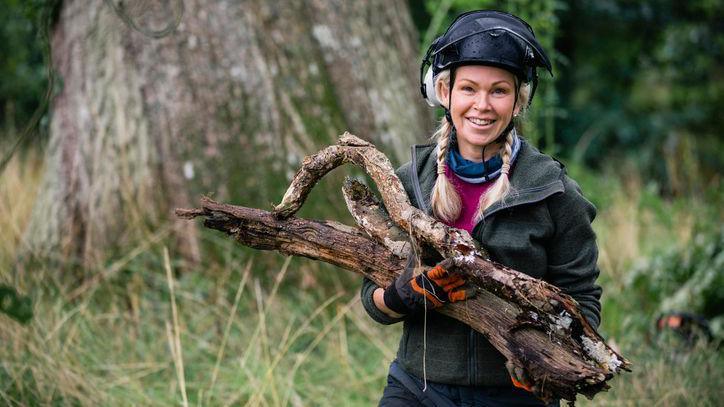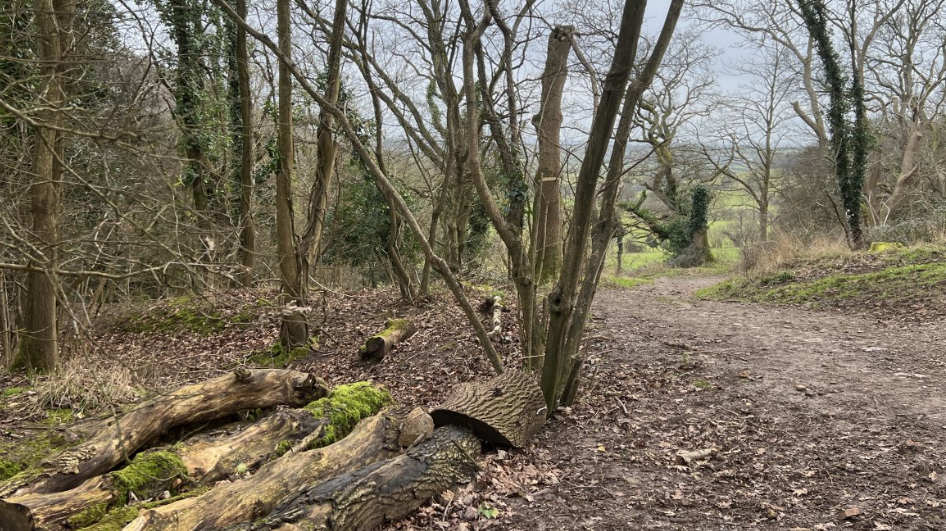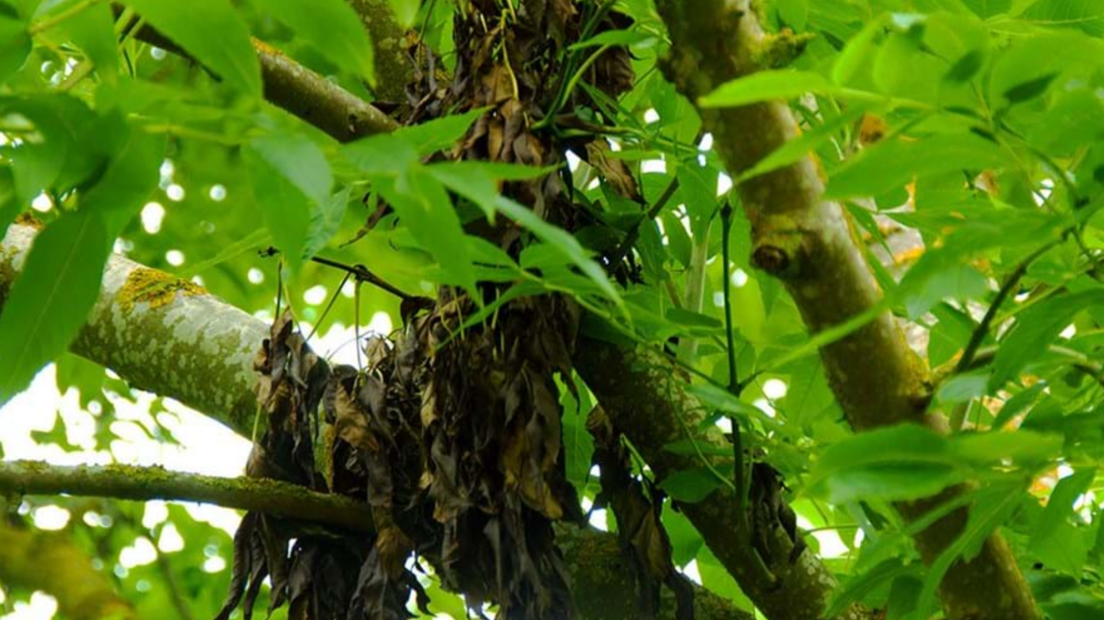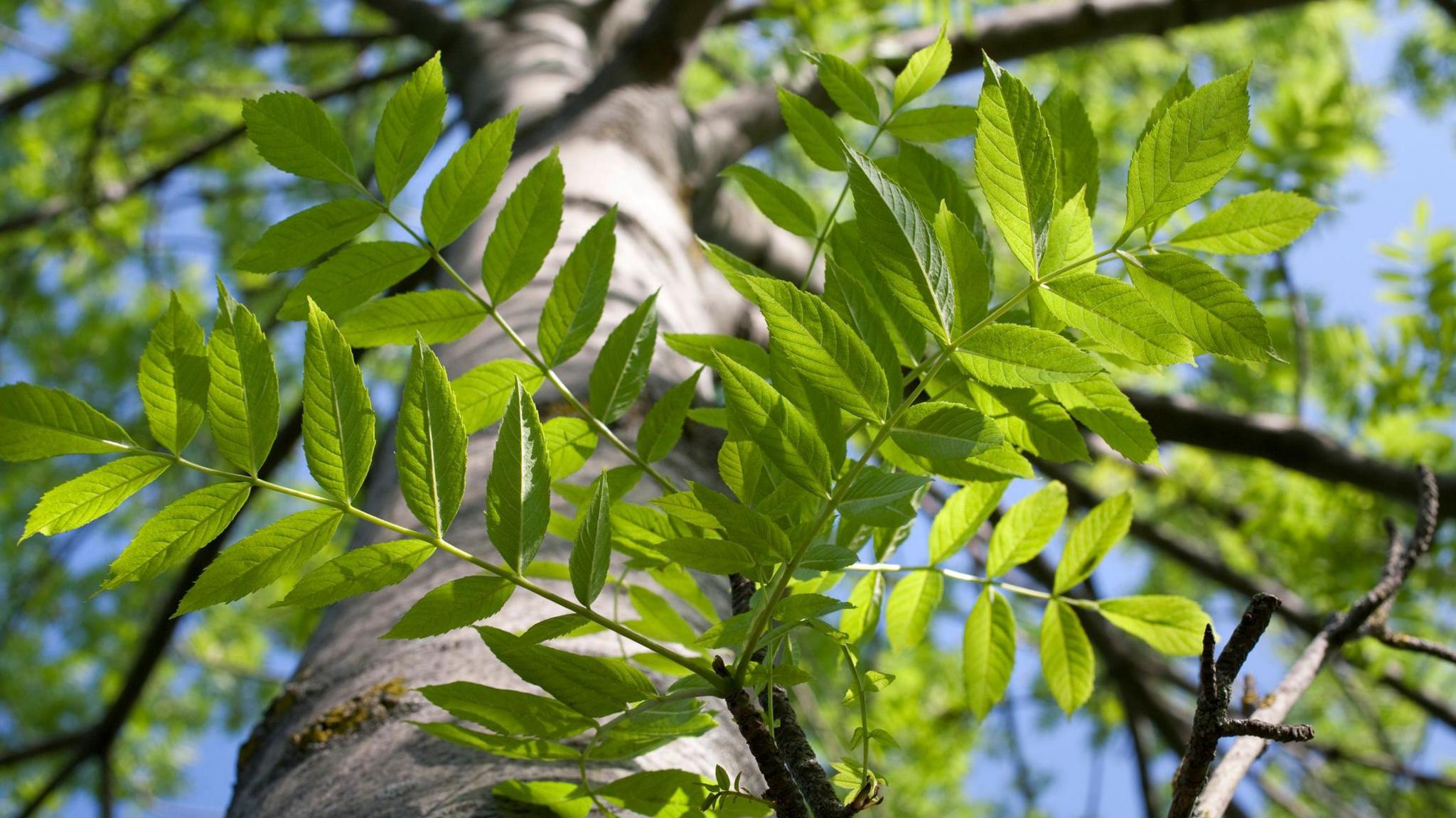More than 1,000 diseased ash trees felled

Trees are being removed to protect other healthy specimens
- Published
More than 1,000 diseased ash trees have been felled as Herefordshire Council works to tackle a fungal disease spreading through them, known as ash dieback.
Ash dieback, caused by the hymenoscyphus fraxineus fungus, external, arrived in the UK in 2012 and has led to many trees being cut down.
The council said ash was the third most common tree in Britain, while in Herefordshire, more than 6,500 hectares of woodland contained ash - with the species also found on roadsides and in public open spaces.
It said the first two phases of a scheme to remove diseased trees had been completed in a move to protect healthy trees, and work on phase three had begun.
Trees being replaced
Between December 2024 and April 2025, work was carried alongside several main roads.
Councillor Elissa Swinglehurst, cabinet member for environment, said teams were only felling trees that were clearly in serious decline, posed an imminent danger to people or property, or where timber with significant value was likely to be lost.
She said the recovery of woodland was "important to maintain the county's tree canopy cover", and a tree-replacement scheme was planned.
The council's tree and hedgerow management plan set out that every tree removed would be replaced with a minimum of five new, smaller trees, she said, adding: "We are committed to tree regeneration."
In places where there was insufficient space, larger trees will be planted in public open space instead.
Get in touch
Tell us which stories we should cover in Hereford & Worcester
Follow BBC Hereford & Worcester on BBC Sounds, Facebook, external, X, external and Instagram, external.
Related topics
- Published7 February

- Published28 November 2024

- Published12 December 2024
